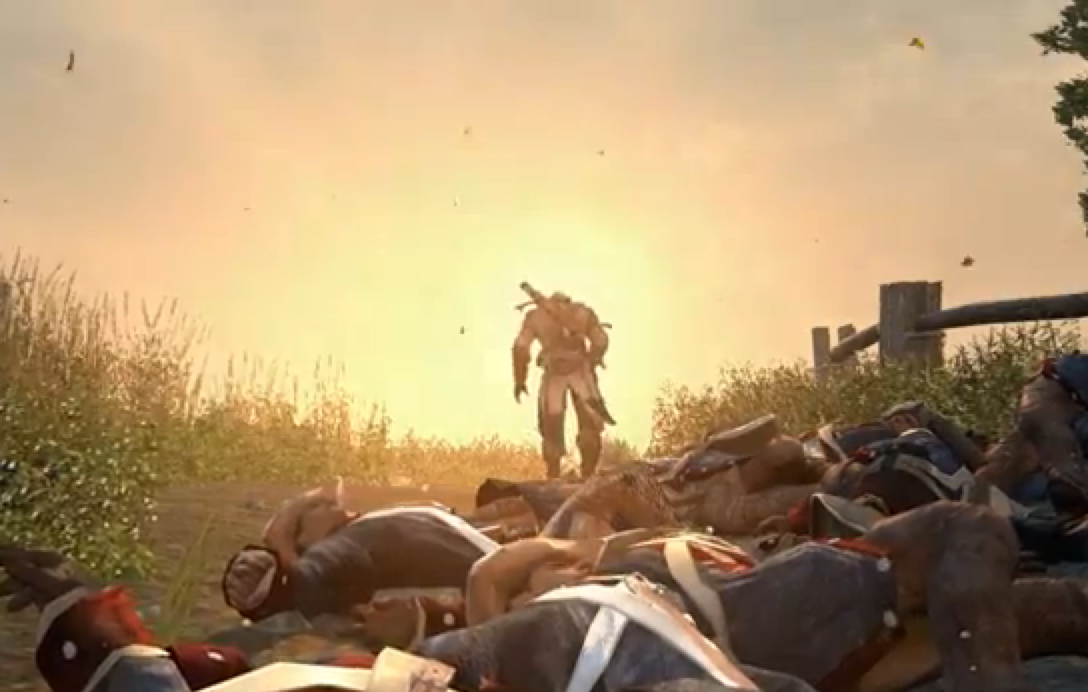Warning: discussion of sexualized youth ahead.
With the announcement of a US/EU version of Monster Monpiece, a Japanese Vita game featuring both a card game RPG and the vigorous screen-rubbing of virtual girls, some controversy has risen over the game’s cut content. As part of the localization, some of the more “sexually explicit” images/cards are being removed from the title, and even after the cuts, the digital download will carry a Mature rating.
Some fans are up in arms over the decision, calling it “censorship” and declaring that no one has the right to determine what kind of content can be delivered under a Mature rating. Others are comparing the game to such titles as GTA V, which feature both sexual actions and nudity. But released images of the cards cut from Monster Monpiece, which I will not link, indicate there’s more here to consider than just sexualization.
In Monster Monpiece, a group of friends work to try to save another girl who has become “Lost.” The girls attend a specialized academy where they are learning to master “monster girls,” mythological and fantasy creatures reimagined as women… and also very young-seeming girls. The monster girls are part of the cards in the card game element, and in order to “seal” the creatures, the player must rub the screen across full and zoomed-in images (often targeting breasts and posteriors) while the animated monster girls giggle and moan. Advancing means clothing is removed, sometimes down to thongs and skimpy tops, and sometimes to mere hands or scraps covering nipples and sex organs.
The cut cards comprise two categories: those monster girls who become almost completely naked and/or in highly sexual positions, or those that appear to be very, very young, with chubby, rounded faces and limbs as well as undeveloped bodies. While in the game they are not human, or children, their physical appearance is absolutely that of very young girls, particular with the Goblin and Kobold creatures, as well as Titania, with her puffy child’s belly. I would estimate they appear between six and eight years old, perhaps younger in the case of the Kobold, she is straddling a blade, further sexualizing the image.
Those who support the changes argue that this is part of localization. Japanese culture seems much more accepting of such drawn images, whereas in the West, we take a harder stance, at least when young-appearing characters are involved. They also point to Bravely Default, the recent Nintendo DS game in which characters were aged up for the localization — 15 year-old girls became 18 — and costumes were changed to be less revealing, and even then, no one had to stroke the breasts of a young girl to power up.
Oh, I’m sorry. Girl creature.
There’s no arguing that games like Monster Monpiece are meant for a niche audience, nor is it uncommon for female characters in Japanese media to appear young and still be as developed as adult women (as is the case with some of the monster girls). Whether or not that’s problematic is not for me to say, in terms of Japan, though as an American woman, I find these attitudes troubling. But it’s less common for Western audiences who do not actively seek unlocalized content to see completely childlike characters sexualized. It happens, of course; even in some fully ported anime and manga series, characters are very young and have no real discernible sexual characteristics, but partake of typical adolescent relationships, up to and including romantic entanglements), but this is still something else altogether, to my eye. I don’t pretend to be any expert on Japanese culture, but from what I’ve seen before, the original content of Monster Monpiece skews to the extreme indeed, and the girl-rubbing minigame is only part of what makes it so unsettling.
Part of the reason we continue to rail against the treatment of women in games — the wanton sexualization, the double standards, the damsels in distress — is that female characters continue to be emblematic of some of gaming’s most problematic ideas, troubling ideas that are reflective of or work to further entrench damaging social attitudes. Here, female creatures are “sealed” and their powers tapped when stroked to a frenzy. This isn’t niche entertainment, but a fully Victorian idea of female orgasmic hysteria. Might as well go at them with a medically approved vibrator and say it’s for their own good.
But they’re not even human, and instead of making the game okay, that perhaps makes it worse. These creatures are stripped even of basic humanity. Once dehumanized, players can treat them as they will, through the female avatars of the player characters.
The issues with games like Monster Monpiece go beyond censorship or localization, into a terrifying landscape in which female simulacra exist as tools to be manipulated, and putting those tools into the hands of other women doesn’t mitigate the possible damage… nor does attempting to defend the title by saying it’s meant for a niche audience. Once such a game is introduced to the U.S., even to that niche audience, these issues should be explored and discussed, but instead, I fear, the discussions will predominantly address the question of censorship, not whether a game with even a limited audience might further entrench troublesome attitudes about women.




